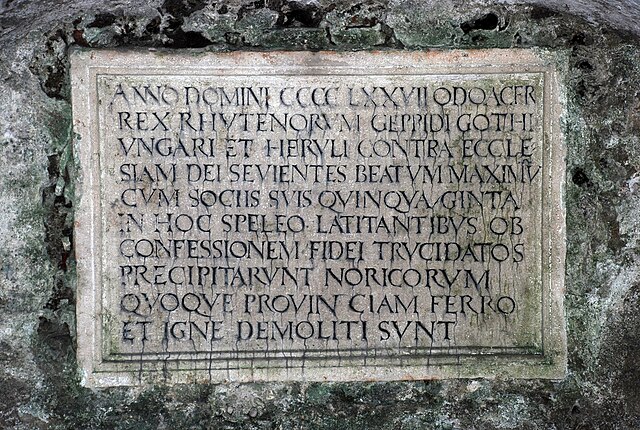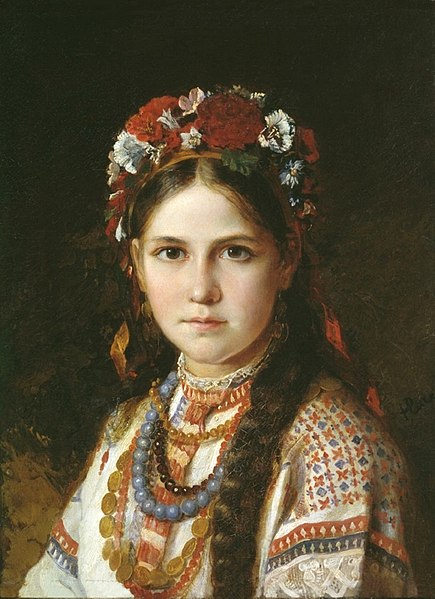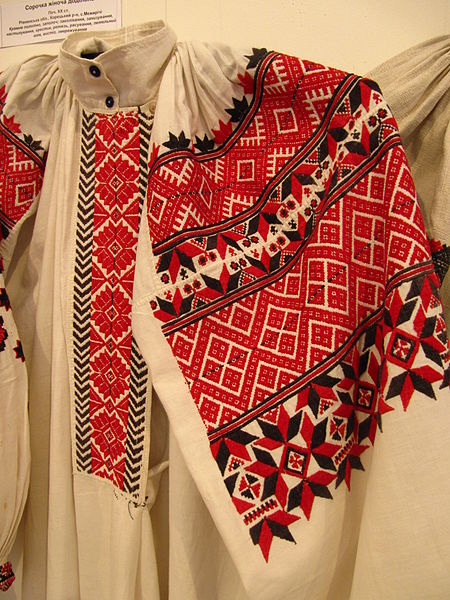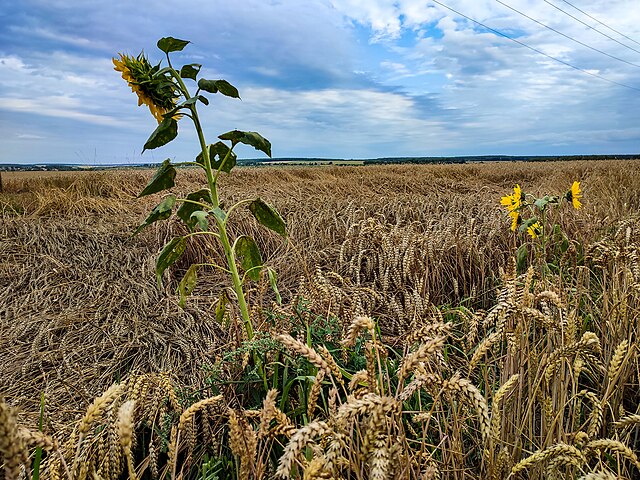Ruthenian and Ruthene are exonyms of Latin origin, formerly used in Eastern and Central Europe as common ethnonyms for East Slavs, particularly during the late medieval and early modern periods. The Latin term Rutheni was used in medieval sources to describe all Eastern Slavs of the Grand Duchy of Lithuania, as an exonym for people of the former Kievan Rus', thus including ancestors of the modern Belarusians, Rusyns and Ukrainians. The use of Ruthenian and related exonyms continued through the early modern period, developing several distinctive meanings, both in terms of their regional scopes and additional religious connotations.
A boy with the pilgrimage flag with the Ruthenian lion during the Ruthenian pilgrimage to the Holy Land in 1906
Ruthenians of Kholm (Chełm) in 1861.
Ruthenians of Podlachia in the second half of the 19th century.
Latin memorial plate from 1521, that mentions king Odoacer as Rex Rhutenorum (Petersfriedhof, Salzburg).
The East Slavs are the most populous subgroup of the Slavs. They speak the East Slavic languages, and formed the majority of the population of the medieval state Kievan Rus', which they claim as their cultural ancestor. Today Belarusians, Russians and Ukrainians are the existent East Slavic nations. Rusyns can also be considered as a separate nation, although they are often considered a subgroup of the Ukrainian people.
A young Ukrainian girl in a folk costume, by Nikolay Rachkov
Maximum extent of European territory inhabited by the East Slavic tribes—predecessors of Kievan Rus', the first East Slavic state—in the 8th and 9th centuries.
Vyshyvanka, traditional Ukrainian dress
Wheat fields and sunflowers, often associated with the Ukrainian culture








